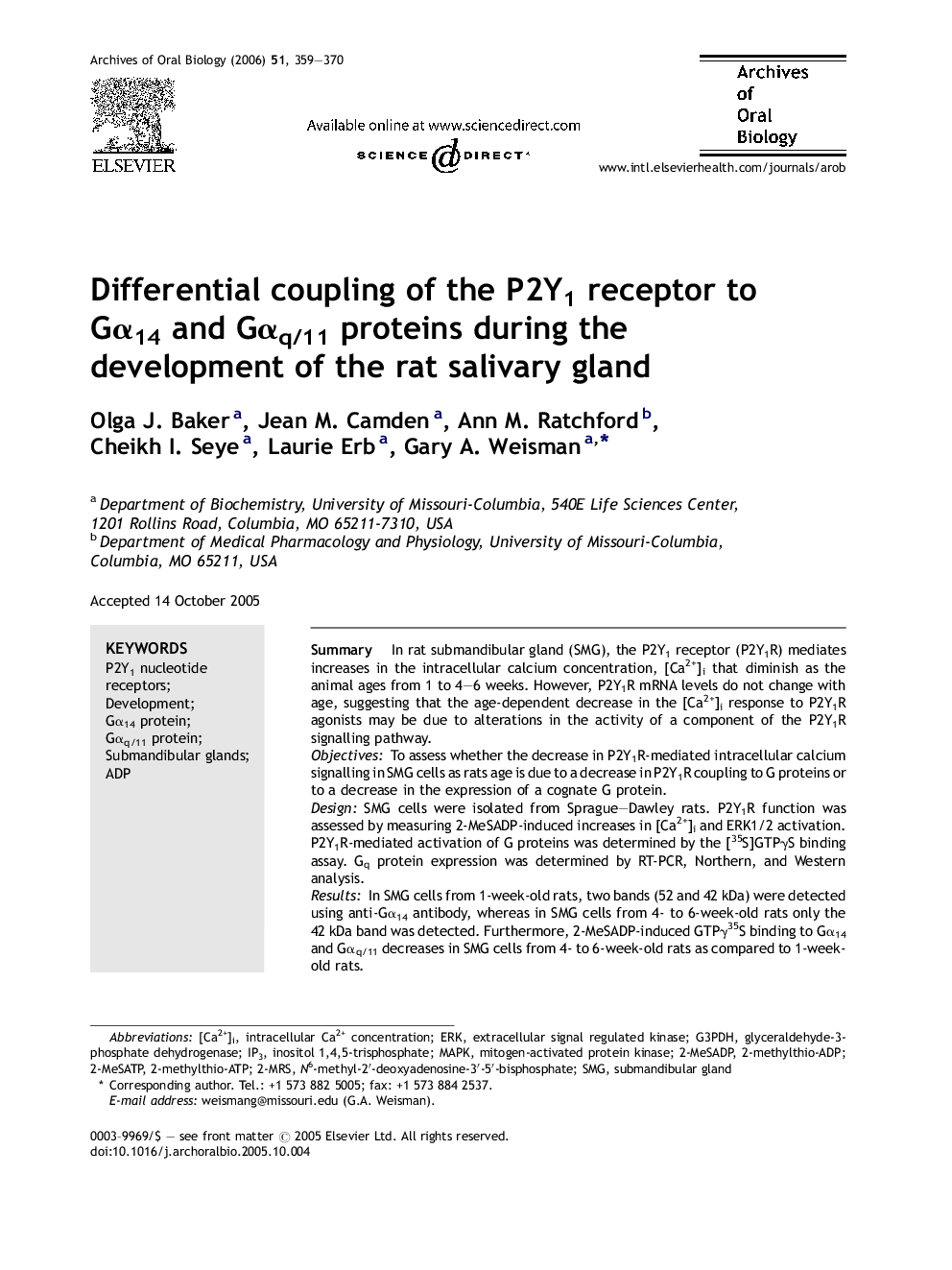| Article ID | Journal | Published Year | Pages | File Type |
|---|---|---|---|---|
| 3121641 | Archives of Oral Biology | 2006 | 12 Pages |
SummaryIn rat submandibular gland (SMG), the P2Y1 receptor (P2Y1R) mediates increases in the intracellular calcium concentration, [Ca2+]i that diminish as the animal ages from 1 to 4–6 weeks. However, P2Y1R mRNA levels do not change with age, suggesting that the age-dependent decrease in the [Ca2+]i response to P2Y1R agonists may be due to alterations in the activity of a component of the P2Y1R signalling pathway.ObjectivesTo assess whether the decrease in P2Y1R-mediated intracellular calcium signalling in SMG cells as rats age is due to a decrease in P2Y1R coupling to G proteins or to a decrease in the expression of a cognate G protein.DesignSMG cells were isolated from Sprague–Dawley rats. P2Y1R function was assessed by measuring 2-MeSADP-induced increases in [Ca2+]i and ERK1/2 activation. P2Y1R-mediated activation of G proteins was determined by the [35S]GTPγS binding assay. Gq protein expression was determined by RT-PCR, Northern, and Western analysis.ResultsIn SMG cells from 1-week-old rats, two bands (52 and 42 kDa) were detected using anti-Gα14 antibody, whereas in SMG cells from 4- to 6-week-old rats only the 42 kDa band was detected. Furthermore, 2-MeSADP-induced GTPγ35S binding to Gα14 and Gαq/11 decreases in SMG cells from 4- to 6-week-old rats as compared to 1-week-old rats.ConclusionsThese findings suggest that the age-dependent decrease in P2Y1R-mediated intracellular calcium signalling in rat SMG cells is due to a loss of 52 kDa Gα14 and indicate the differential coupling of the P2Y1R to Gα14 and Gαq/11 as the gland develops.
